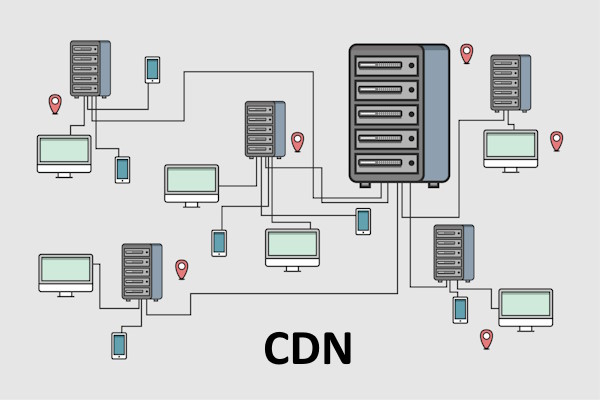Simulating a CRM (Customer Relationship Management) system or a pseudo-CRM using plus addressing and rules in your email client can be a creative and efficient way to organize and manage your communications. Plus addressing involves adding a “+” symbol and extra text to your email address to create variations that can be filtered using rules. How easily and the level of sophistication achieved is dependent on the email client in use. If you are using Office 365 email you then the outcomes can be to a high level and more seamless. Good results can also be had with popular clients such as Gmail.
Here’s a step-by-step guide on how you can achieve this:
- Understand Plus Addressing:
- Most email providers support plus addressing. For example, if your email is [email protected], you can use [email protected], [email protected], etc.
- Emails sent to these variations will still be delivered to your primary email address.
- Create Tags for Contacts or Categories:
- Decide on the tags or categories you want to use for your pseudo-CRM. For example, you might use tags like client1, client2, projectA, etc.
- Modify Your Email Address:
- When communicating with contacts or about specific topics, use the plus addressing to modify your email address. For instance, if your email is [email protected], you might use [email protected] or [email protected].
- Set Up Rules in Your Email Client:
- Create rules or filters in your email client to automatically categorize incoming emails based on the modified email address.
- For example, create a rule that moves emails sent to [email protected] to a folder labeled “Client 1” or tags them accordingly.
- Use Folders or Labels:
- Organize your inbox using folders or labels to represent different aspects of your pseudo-CRM.
- Each tag or category can have its own folder or label.
- Automate Responses or Actions:
- Set up automated responses or actions for specific tags.
- For example, you might set up an automatic reply for emails with the tag inquiry or move emails with the tag urgent to a priority folder.
- Regularly Review and Update:
- Periodically review your folders or labels and update your rules/tags as needed.
- This helps maintain an organized and efficient system.
- Integrate with Tasks or Calendar:
- If your email client allows, integrate your pseudo-CRM with tasks or calendar features.
- Link emails to specific tasks or events for better organization.
- Use Search and Filters:
- Leverage your email client’s search and filtering capabilities to quickly find emails based on tags or categories.
- Educate Contacts:
- If you’re collaborating with others, inform them about your tagging system so they can use the appropriate email address.
By implementing these steps, you can create a customized and organized system within your email client that simulates some aspects of a CRM. It’s important to regularly review and adjust your system based on your evolving needs.
Getting Closer To A Dedicated CRM
While using plus addressing and rules in your email client can offer a makeshift CRM system, it may not fully replace the functionalities of a dedicated budget CRM ( the real thing). However, you can optimize your system to better meet your needs. Here are some suggestions for improvement:
- Detailed Tagging System:
- Create a comprehensive tagging system. Use specific and consistent tags for different types of contacts, projects, or tasks.
- Standardized Subject Line Format:
- Encourage a standardized subject line format for emails. This can include project codes, client names, or keywords that can be easily filtered.
- Email Templates:
- Create and use email templates for common interactions. This ensures consistency in your communications and makes it easier to track interactions.
- Link to External Tools:
- Integrate your pseudo-CRM with external tools. For example, link emails to specific tasks in a project management tool or connect them to events in your calendar.
- Automated Follow-ups:
- Set up automated follow-ups for specific tags. This can be achieved through scheduled reminders or automatic replies based on certain criteria.
- Client History Documentation:
- Develop a system for documenting client history within your email client. This could include a dedicated folder or label for historical communications.
- Analytics and Reporting:
- While basic, some email clients offer analytics. Explore these features to gather insights into your communication patterns and interactions.
- Task Management Integration:
- Integrate your email system with a task management tool. This allows you to convert emails into actionable tasks, set deadlines, and track progress.
- Collaboration Tools:
- Utilize collaboration tools within your email client or externally. This can include shared documents, notes, or collaborative spaces for each project or client.
- Security and Privacy Considerations:
- Be mindful of security and privacy concerns, especially when dealing with client information. Ensure that your makeshift CRM system complies with any relevant regulations.
- Regular Review and Optimization:
- Schedule regular reviews to assess the effectiveness of your system. Optimize your tagging system, rules, and processes based on your evolving needs.
- Backup and Sync:
- Consider backup solutions for critical client information and ensure synchronization across devices if you use multiple platforms.
Note: While this approach can help you manage client interactions and projects on a budget, it’s important to recognize its limitations compared to a dedicated CRM system. If your business grows and demands more sophisticated features such as:
- sales pipeline management,
- advanced reporting,
- or integrations with other business tools,
then it may be time to start evaluating then investing in a dedicated CRM solution.
Related Content

Throwaway Email Mailboxes
Introducing Throwaway Mailboxes for Streamlined Client Communication In a move to enhance user privacy and streamline communication, we’re excited

CDN Increases Performance And Security
Care Plan Clients Experience Elevated Website Performance and Security with a Content Delivery Network (CDN) The performance and security

Understanding and Preventing User Enumeration in Web Applications
User enumeration is a common security vulnerability in web applications that presents serious consequences for organization or users of

Optimizing for Better PageSpeed Insights Scores
Optimizing Website Speed for Better PageSpeed Insights Scores In a fast-paced digital landscape a slow-loading website can be a


